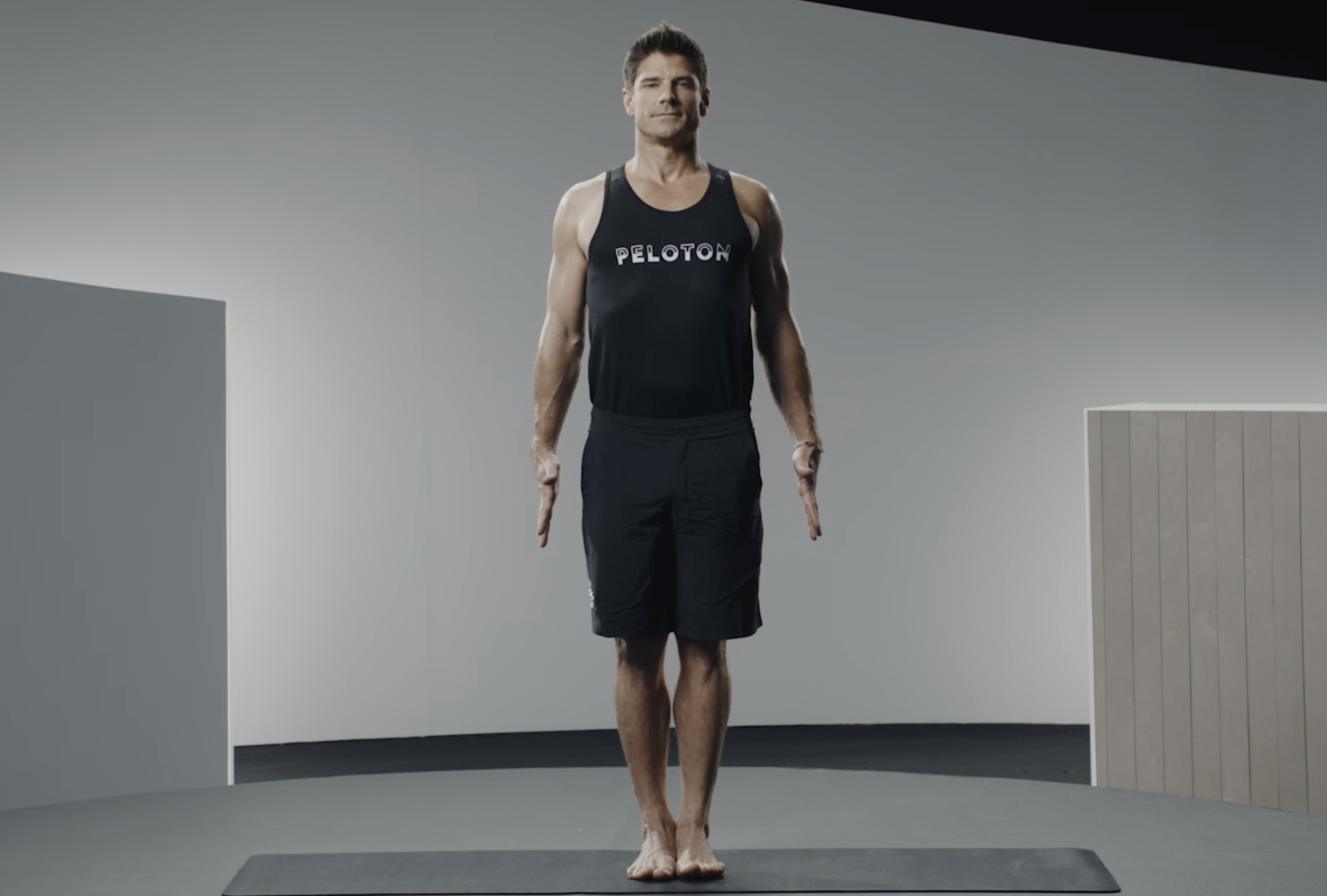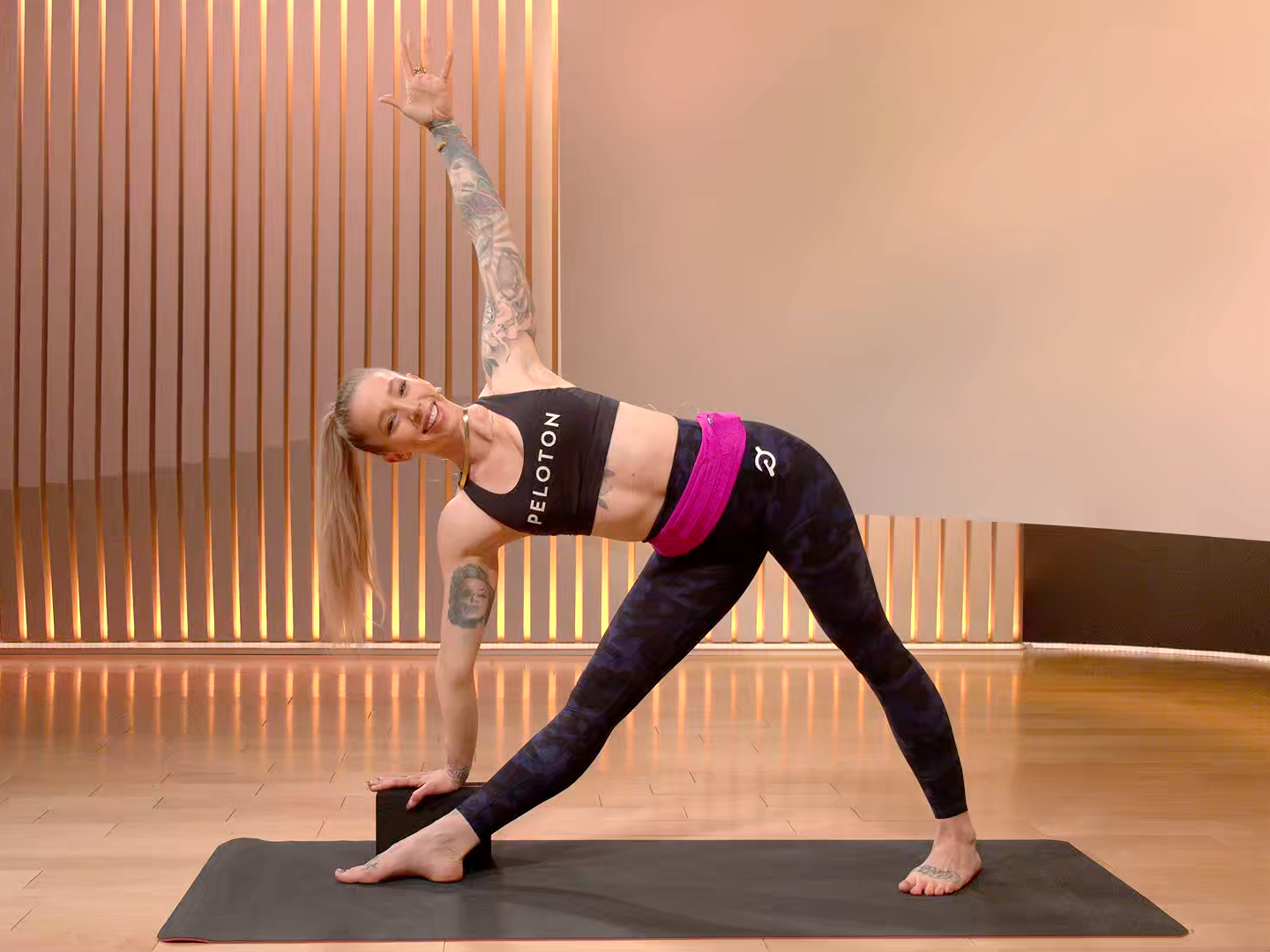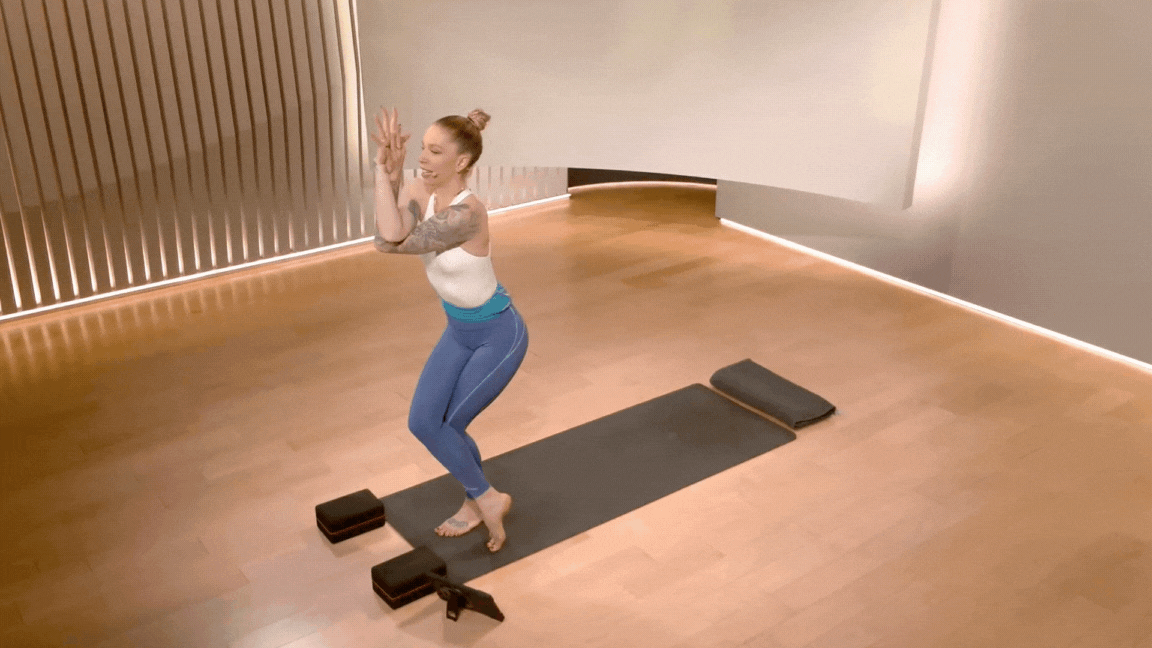
12 Standing Yoga Poses to Build Stability and Strength
No matter your skill level, these poses come with some major benefits.
By Leigh Weingus•
Why Do Standing Yoga Poses?
Standing vs Seated Yoga Poses
12 Standing Yoga Poses to Build Strength and Stability
Are Standing Yoga Poses Good For Beginners To Try?
Tips To Improve Your Standing Yoga Poses
Practices and Flows That Feature Standing Yoga Poses
When we think about building strength and stability, yoga may not be the first thing that comes to mind. Yoga is all about increasing flexibility, right? Yes and no. While yoga will certainly improve flexibility, it’s also a great way to build strength and stability in the body and tighten your core.
Of course, not every pose will do this for you, but certain standing yoga poses are extra helpful for building stability. Here’s everything you need to know about why standing yoga poses are so beneficial, the best ones to try, and beginner standing poses to consider when you’re trying to build strength.
Why Do Standing Yoga Poses?
Standing yoga poses, which are often integrated into traditional yoga flows but can also be done on their own, have several benefits for your body and mind, from building core strength to improving overall stability. Examples of well-known standing yoga poses include Warrior 1, Warrior 2, Tree Pose, Chair Pose, and Eagle Pose.
Benefits of Standing Yoga Poses
Here are some of the main benefits of standing yoga poses, according to Peloton instructor Kirra Michel.
Strength-building: “Standing poses engage major muscle groups including the legs, core, and back,” Kirra says.
Stability and balance: “These poses improve proprioception, coordination, and balance."
Improved posture: “These poses align the spine and strengthen back muscles,” Kirra explains. “They also enhance flexibility in the hamstrings, hips, and shoulders.”
Standing vs Seated Yoga Poses
While standing yoga poses have a more solid reputation when it comes to improving stability, seated yoga poses can be helpful too—especially for anyone who may have trouble with standing variations. “Standing yoga poses require the engagement of many more stabilizing muscles, especially those [moves] that require a diminished base of support with a narrow stance or lifting a leg off the ground,” explains physical therapist Michael Masi. “Transitioning in and out of the poses also requires a dynamic balance much more than if performing in a seated position.”
Standing moves are typically more physically demanding, he adds, challenging muscle strength and endurance compared to their seated counterparts. “Standing is the best option for challenging stability, but seated yoga poses are a better option if you’re not quite ready for standing variation, or if you’d like to be able to hold poses for longer durations, especially those that may have a heavy focus on flexibility or relaxation.”
12 Standing Yoga Poses to Build Strength and Stability
Want to get started with standing yoga poses that will help you build strength and stability? Try these 12 poses—recommended by Kirra and Masi—which range from beginner-level to more challenging.

Mountain Pose
Stand with your feet together, arms at your sides, with palms facing forward. Distribute weight evenly across both feet.
Engage your thighs, lift your kneecaps, and lengthen your spine. Stack ears, shoulders, and hips.
Relax your shoulders and hold the pose.

Standing Forward Bend
Stand with feet hip-width apart.
Hinge at the hips to fold forward, letting your head hang.
Hold your elbows or place your hands on the ground or on blocks. Elongate your spine, keeping a slight bend in your knees if needed.

Stand with your feet wide. Turn your right foot out and your left foot slightly in.
Extend your arms parallel to the ground. From your hip, hinge forward and down until your hand is on your shin, ankle, block, or the floor.
Keeping your torso long, extend your left arm upwards. Look up at your left hand and hold the pose.

Start in a standing position with feet hip-width apart.
Step one foot back about three to four feet, turning the back foot out at a 45-degree angle.
Bend the front knee to a 90-degree angle, keeping the knee over the ankle.
Raise arms overhead, keeping shoulders down and away from ears.

Face the side of your mat with your feet wide and arms stretched out toward the front and back of your mat.
Turn your right leg toward the front of the mat, bending your knee so it’s stacked above your ankle. Angle your left foot in slightly. Distribute your weight evenly between both legs.
Keep your torso long, with your head stacked over your pelvis.
Reach through both arms and turn to look past your right hand.

Stand on one leg and place the sole of the other foot on your inner thigh or calf.
Press your foot into your leg and your leg into your foot. Gently squeeze your glutes and press the pelvis slightly forward.
Bring your hands to prayer position in front of your chest or raise them overhead.
Focus on a point in front of you to maintain balance.

Stand with your feet together or hips-distance apart.
Bend your knees as if sitting back in a chair. Toes and knees track straight forward, legs parallel, and weight heavily in heels.
Raise your arms overhead, keeping your chest lifted.
Hold the position, engaging your core and legs.

Stand on your right leg and wrap your left thigh over your right as you bend your standing leg into a chair position. Hook your left foot behind your right calf if your body allows it.
Bring your arms in front of you and wrap your left arm under your right, bringing palms together if possible. Otherwise, give yourself a tight hug.
Lift your elbows up and away from your body.

Start in Warrior 2 with your right foot forward.
Shift your weight onto your right foot, putting your right hand on the floor or on a block under your shoulder.
Lift your left leg parallel to the floor, and extend your left arm toward the ceiling.
Open your chest and hips to the left, stacking them vertically.

Revolved Half-Moon Pose
Start in a standing forward fold with your feet hip-width apart.
Place your right hand on the floor in front of your right foot.
Lift your left leg parallel to the floor and extend your left arm toward the ceiling.
Rotate your torso to the left, stacking your shoulders vertically.

Standing Split
Begin in a forward fold with your feet hip-width apart.
Shift your weight onto your right foot and lift your left leg as high as possible. Keep your hands on the floor, on blocks, or hold onto your right ankle.
Square your hips to the floor and engage your core.

Warrior 3
Begin in Warrior 1 pose with your right foot forward.
Shift your weight onto your right foot and slowly lift your left leg off the ground.
Lower your torso forward, bringing your body parallel to the floor.
Extend your arms straight ahead or out to the sides for balance.
Engage your core and keep your standing leg strong.
Are Standing Yoga Poses Good For Beginners To Try?
Yes, certain standing poses can be great for beginners. They’re less challenging but can still be stabilizing and help you build strength as you work toward more advanced yoga poses. Kirra recommends Mountain Pose, Standing Forward Bend, and Triangle Pose for beginner yoga poses, while Masi also suggests Warrior 1 and Chair Pose.
Tips To Improve Your Standing Yoga Poses
You may find some standing yoga poses challenging. Luckily, there are plenty of ways to modify and steadily improve your standing yoga poses. Kirra’s first tip? Use props. “A wall, a chair, or blocks will all work,” she says.
Focusing on form is also key. “Ensure proper alignment to prevent strain and enhance stability,” she suggests. “Also, it’s important to remember to build gradually. You’ll want to start with simpler poses and gradually progress to more challenging ones.”
Finally, it can be helpful to continuously work on your core while doing these exercises. “A strong core aids in better balance and stability,” Kirra says.
Practices and Flows That Feature Standing Yoga Poses
Standing poses are almost always integrated into various flows and practices, Kirra notes. These classes might include power yoga, vinyasa flows, beginner yoga, slow flow, and yoga conditioning classes. Peloton even has standing yoga classes, which focus on standing yoga poses specifically.

Peloton App
Access thousands of classes with no equipment needed.
“Peloton's yoga classes often emphasize a mix of standing and seated poses to create a balanced practice that enhances strength, flexibility, and mental focus,” Kirra says. With that in mind, you can also practice these poses in a more isolated way, such as working on your Tree Pose at home for a few minutes every day.
While standing yoga poses can go a long way when it comes to improving posture, strength, and stability, it’s important to remember that building up to these poses can take time, so don’t be afraid to start with beginner poses like Mountain Pose and Standing Forward Fold. Eventually, you’ll be able to build up to more challenging poses, especially if you take Peloton’s yoga classes regularly.
This content is for informational and educational purposes only and does not constitute individualized advice. It is not intended to replace professional medical evaluation, diagnosis, or treatment. Seek the advice of your physician for questions you may have regarding your health or a medical condition. If you are having a medical emergency, call your physician or 911 immediately.
Level up your inbox.
Subscribe for a weekly dose of fitness, plus the latest promos, launches, and events.
By providing your email address, you agree to receive marketing communications from Peloton.
For more about how we use your information, see our Privacy Policy.







